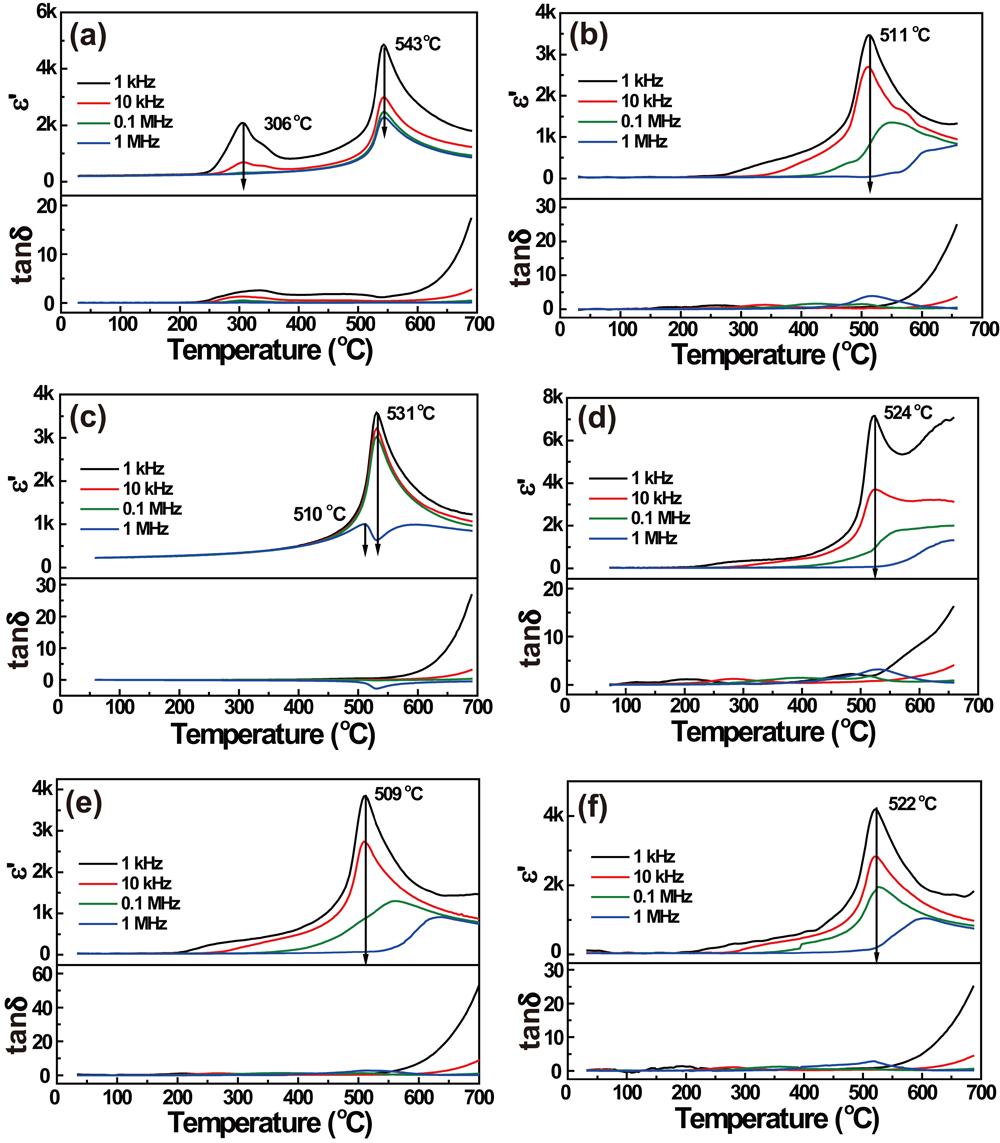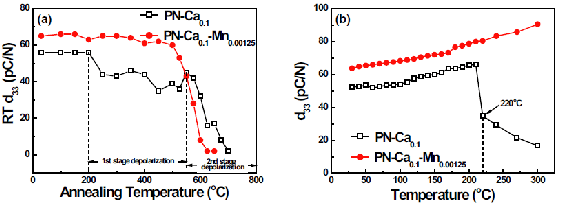Piezoelectric ceramics with a High Curie temperature (Tc) are urgently needed in sensors and actuators working at elevated temperatures, particularly those for aerospace and automotive industries. PbNb2O6 (PN) is one of the most promising high temperature piezoelectric materials due to its high Tc up to 570 oC. In addition, its low mechanical quality factor, low acoustic impedance and high coupling anisotropy are desirable for underwater transducers. However, a serious drawback is the difficulty in fabrication due to phase instability.
Doping or element substitution is a simple while effective method for improving the sintering activity and the electrical performance of ceramic materials. However, single doping in PN usually leads to a lower Tc and deteriorated piezoelectricity. Although codoping is more effective, it also causes complicated effects, and the relevant physical mechanisms for PN are far from being clear. This largely originates from the much more complicated tungsten bronze (TTB) type structure of PN.
Recently, by selecting an A-site dopant Ca and a B-site dopant Mn, researchers observed a ‘synergistic’ doping effect, which simultaneously enhanced the high temperature stability and piezoelectricity of PN.
The codoped sample also showed a much more homogeneous and dense microstructure, a high Tc (>530oC, Fig.1), and a high d33 up to 71 pC/N (Fig.2). More importantly, by directly measuring the high temperature piezoelectric coefficient d33 of the ceramics via a novel in situ Berlincourt method, researchers observed a two-stage depolarization process in the normal PN ceramics while a modified one step one in the codoped sample.
The effects were explained by the improved sintering behavior and poling efficiency as well as the tendency to occupy different lattice sites of the dopants. The materials are promising for high temperature sensors, and the results may provide more clues for understanding the physical mechanisms of depolarization of the piezoceramics.

Fig. 1 Temperature dependence of dielectric constant and dielectric loss (tanδ) of the samples. (a) the curves for PN-Ca0.1 sample. (b) to (c) are the curves for PN-Ca0.1 Mnx samples with x values from 0.001 to 0.004. Note that the single doped sample shows a 2 stage phase change as reflected by figure (a) (Image by GUO).

Fig. 2 (a) Variation of RT d33 of PN-Ca0.1 and PN-Ca0.1Mn0.00125 samples as a function of annealing temperature (annealed for 1 h), where the two stages of depolarization are also denoted; (b) Temperature dependence of high temperature d33 directly measured by the Berlincourt method, where the depolarization temperature of about 220 oC for PN-Ca0.1 sample (square) is very close to that in (a) (Image by GUO).
Funding for this research came from the ‘100 Talents Program’ of Chinese Academy of Sciences, the National Key Basic Research Program of China (973 Program, grant no. 2013CB632900), the National Science Foundation of China (NSFC no. 11074277), the Overseas Talent Foundation of Beijing Academy of Science and Technology (no. OTP-2013-001), and the Open Foundation of the State Key Laboratory of New Ceramics and Fine Processing of Tsinghua University.
Reference:
CAI Kai, JIANG Feng, DENG Pingye, MA Jingtao, and GUO Dong. Enhanced Ferroelectric Phase Stability and High Temperature Piezoelectricity in PN Ceramics via Multisite Co-Doping. Journal of the American Ceramic Society (Vol. 98, No. 10 pp. 3165–3172, October 2015). DOI: 10.1111/jace.13714.
Contact:
GUO Dong
Institute of Acoustics, Chinese Academy of Sciences, 100190 Beijing, China
Email: dong.guo@mail.ioa.ac.cn


